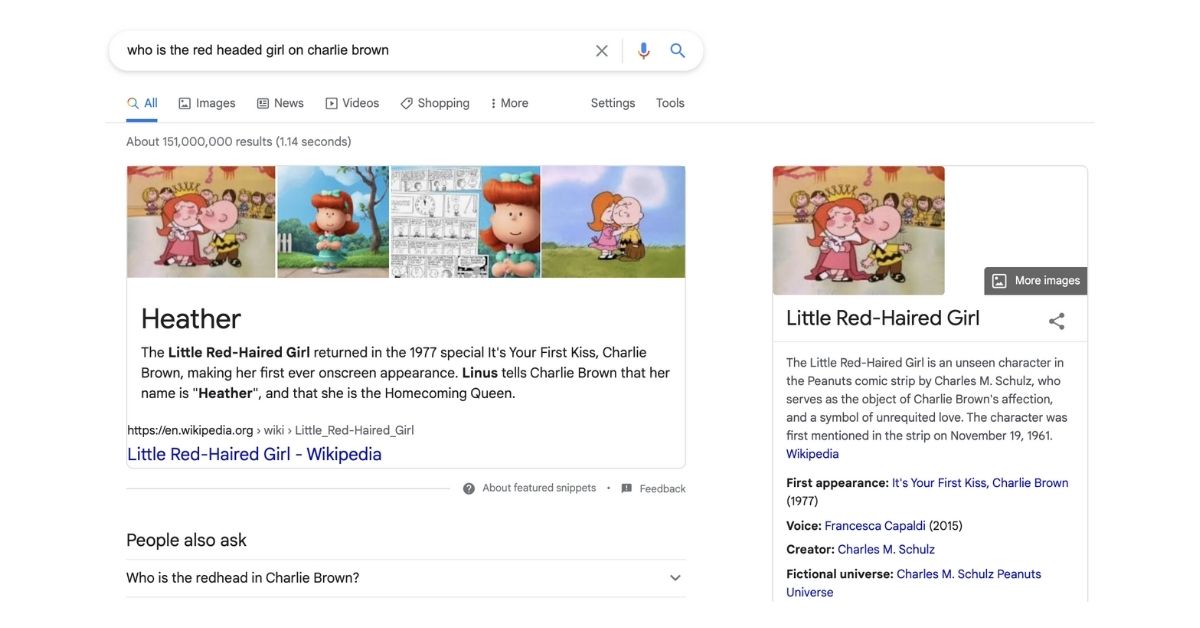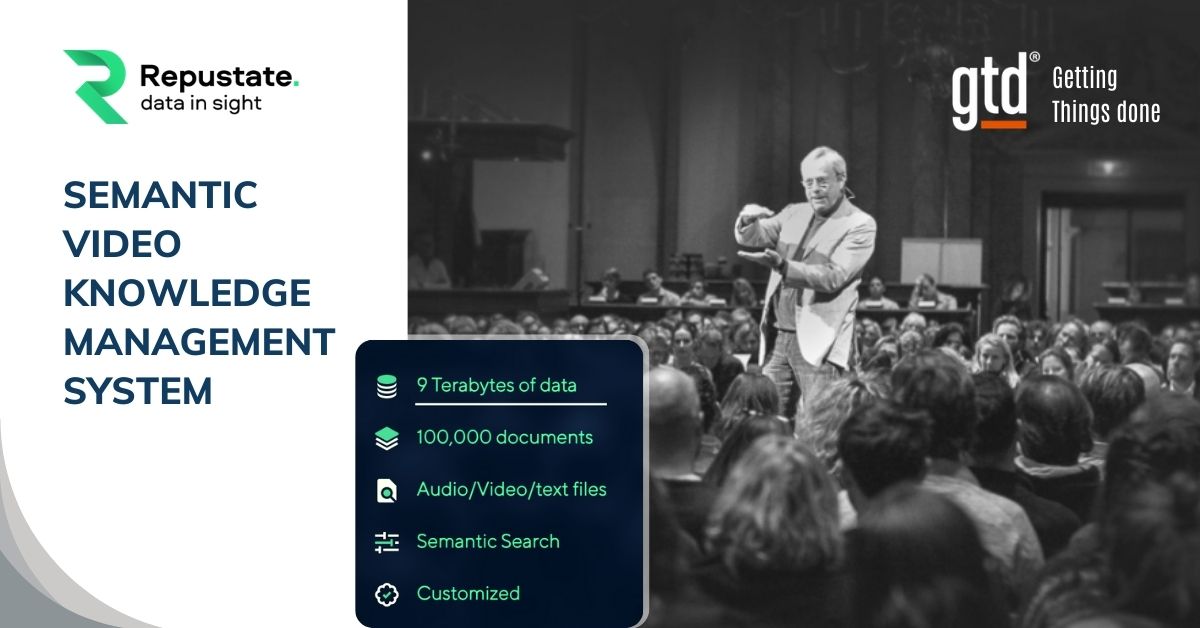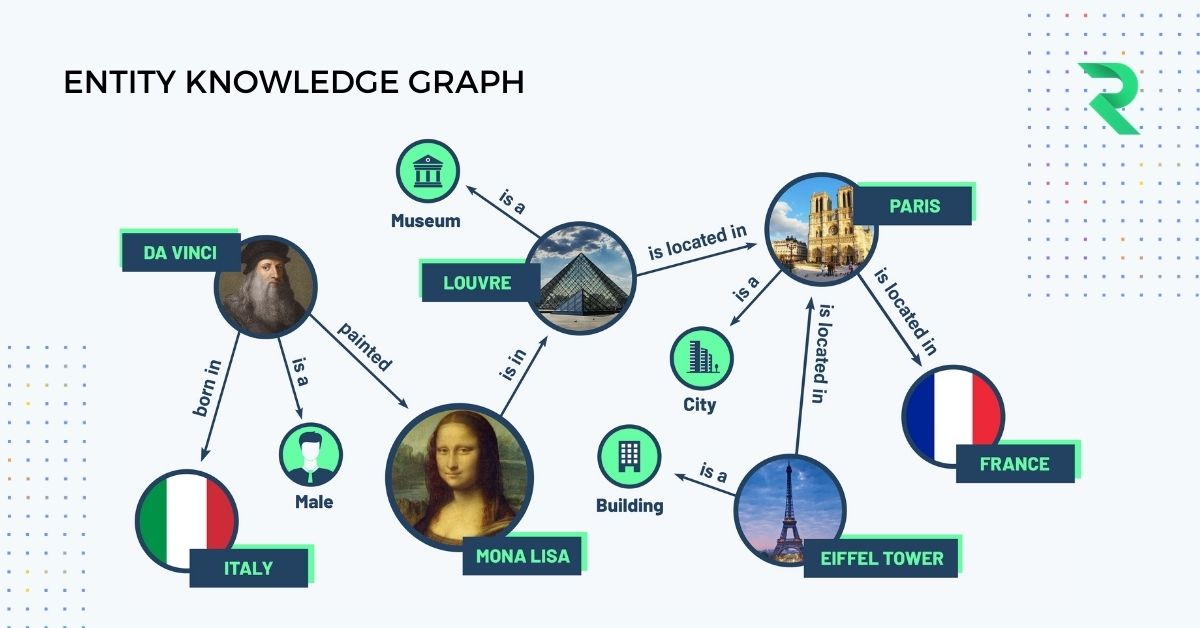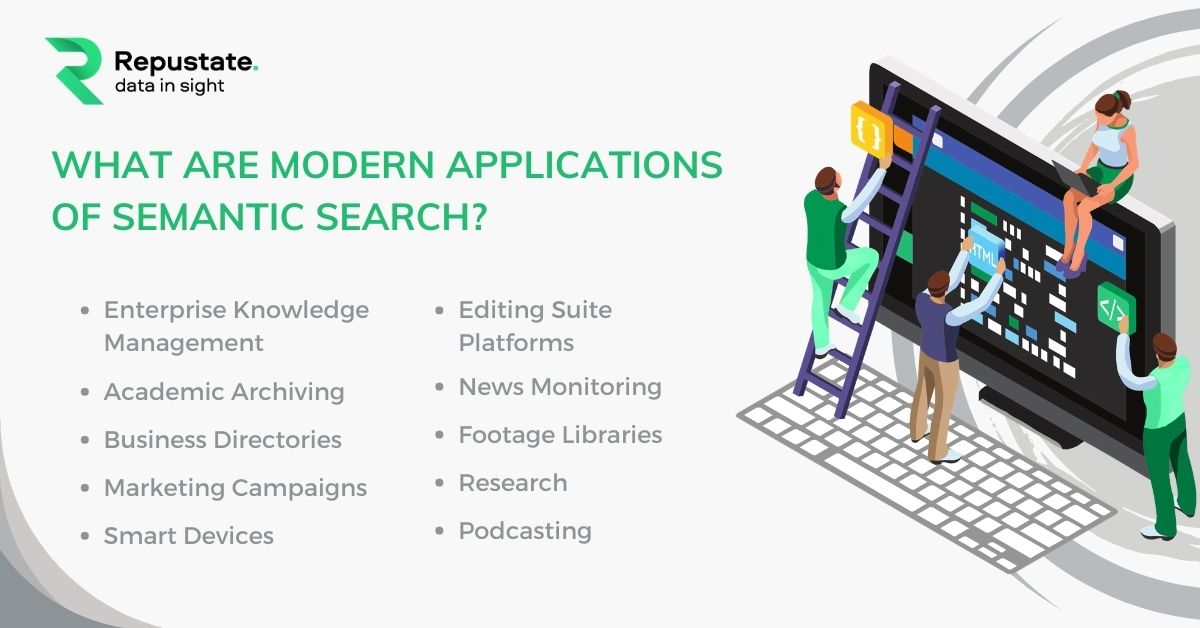Semantic Search: How its Evolved Beyond Search Engines
Semantic search is driven by the principle of logic beyond a search query’s linguistic context. Semantic algorithms map the connections between words and concepts and thus find contextual meaning in terms used by a person. In a way, semantic analysis bridges the gap between man and machine by enabling search engines to understand questions without expressly relying on keywords. With exponentially growing online content and business data, intelligent search has become more of a necessity than an option. Read on to know why.
The Need for Semantic Search
Semantic search has evolved beyond just search and retrieval to the intelligent curation of unstructured archived data for business intelligence. Since semantic search eliminates the need for time-consuming manual intervention in content management, it allows businesses to save time and reduce costs. That’s why enterprises and businesses are using advanced custom-built applications of the technology, more than ever, for better operational efficiencies and functional insights.
Semantic search is used strategically by companies for knowledge management. It allows for meaningful and seamless data-sharing by employees across teams and locations based on contextual references. Even social media companies employ it on their platforms to help users explore common interests, trending topics, and products and services advertised by different businesses and organizations.
Semantic Search Examples
Semantic search examples abound in our everyday usage and are so ubiquitous that we take them for granted. Here are a few of them based on key features of the technology.
- Intuitive:
Semantic search solutions analyze, recognize, and semantically organize unstructured data through text and video content analysis. Because of this, a user can input a query without actually using keywords and knowing the exact term of what they are looking for, and yet get desired results.
Example: Here is a semantic search example from Google’s engine. The user is looking for a red-headed character in a cartoon strip called Peanuts, even though he doesn’t know the character’s name. You can see that the search engine understands that “Heather” is the “red-headed girl” in Peanuts, and so she must be the one the user is interested in.

- Contextual:
Intelligent search tries to deduce what a user is searching for, based on past queries, even if they are not directly related to the current query. It creates a contextual connection to the user’s often-used words, phrases, location, and historical searches.
Example: In this query about the weather, due to the user’s past searches, the intelligent search also shows variations of the query based on different locations the user has visited or searched.

- Knowledge Management:
A semantic search solution for an enterprise semantically organizes thousands of pieces of content and makes them instantly searchable. The search engine is custom-built for the company based on all entities and aspects related to it. Through meticulous algorithms, the company’s personalized semantic search solution allows the business to use this now intelligently structured data for content retrieval and brand insights.
Example: Here is a real-world example of how Repustate’s semantic search solution helps the David Allen Company in knowledge management of its massive Getting Things Done (GTD) content. The entire repository is semantically organized and immediately available for search and retrieval.

- Conversational:
Intelligent search understands a query that has been input in a conversational manner and then retrieves information and presents it to the user in the same style. Natural language processing (NLP) tasks working under the hood of the search engine enable the tool to decipher what the person is saying and give a more personalized answer, almost as if the search engine were a person rather than a machine learning algorithm. This often happens when we listen to Apple’s Siri and feel as if she were a person, rather than an intelligent software.
Example: Notice in the semantic search example below, the search engine gives the correct answer. But it also gives a brief description of the topic itself, along with the many details associated with it. It mimics two users engaging, rather than a search engine doing its job of simple data retrieval.

How does Semantic Search Work?
The Semantic Search algorithm works by discovering contextual relationships between words and terms. Through natural language processing techniques like named entity recognition (NER), the algorithm recognizes and extracts entities in a text. When a person inputs a query into a search engine like Google, Bing, or a company’s private intelligent search engine, the NLP algorithms break down the query into subsets. They use tasks such as error correction, synonyms, POS tagging retrieval, and conversion to word embeddings to analyze the text. Combining all these activities, they extract relevant details from the data source and present the user with precise results.
SEMANTIC MAPPING
The search engine’s algorithm studies and creates links between different entities, words, and phrases, and also unearths patterns in the user’s past searches. This is how it deduces the intent of the user and produces relevant results. This collection and correlation of facts amongst thousands of entities comprising people, places, and things in the algorithm, is represented through Knowledge Graphs. The semantic search examples mentioned above are a result of this semantic mapping, which is what makes intelligent search so powerful.
Below is an example of a knowledge graph and the correlation between entities.

What are modern applications of semantic search?
Semantic search is used by organizations for advanced knowledge management services and increased market visibility. Teaching hospitals, podcasters, television, and entertainment companies, all use semantic search for archiving and intelligent organization of audio and video content. Let’s look at these examples, and more, in detail.
- Enterprise Knowledge Management:
Enterprise knowledge management is a rapidly growing market. Organizations understand the vital need for intelligent knowledge management across areas like employee data, patient voice data, customer feedback and recommendations, banking and finance, etc. From tasks like search and retrieval to sentiment analysis of reviews and comments, semantic search solutions enable enterprise teams to access organization-wide information seamlessly and integrate business intelligence strategies.
- Academic Archiving:
Institutions like universities and colleges, as well as public and private libraries are another semantic search example where the solution is used to intelligently organize vast data. Some institutions have such large databases and are so geographically diverse that they are accessed by thousands of people worldwide. The need for semantically organized data across images, text documents, and video content is imperative in such cases, and so they rely heavily on semantic search solutions.
- Business Directories:
Various Chambers of Commerce, trade boards, and corporate directories have humongous databases that connect corporates to existing and potential customers. These organizations use semantic search solutions for contextual organization of their data comprising member information, competitive analysis reports, and other key information that are on a continual growth trajectory.
- Marketing Campaigns:
E-commerce companies, non-profit and political organizations, digital marketing companies employing SEO, are all embracing intelligent search to enhance their presence on the internet. They are leveraging the semantic search capabilities of social media and other web platforms to attract potential customers and connect like-minded people. They are using the technology to strategically advertise relevant products and services to users that they think they might be interested in.
- Smart Devices:
Smartphones, laptops, tablets, and digital appliances all use semantic search technologies. When your phone understands an incorrect spelling and gives you the right answer; when your smart device remembers your favourite song; or when your smart refrigerator reminds you of items on your grocery list - they are all using intelligent algorithms that understand your query through contextual reference.

- News monitoring:
Companies use news monitoring to keep a track of their brand reputation, current affairs that affect their markets, and competitor analysis. Monitoring news and searching for region or domain-specific information helps keep businesses prepared for future considerations. From financial companies, to toy manufacturers, all depend on semantic news search for this very reason.
- Footage libraries:
Footage libraries, especially the free ones like Shutterstock, Videvo, IStock, Adobe Stock, etc. all need semantic search to archive and semantically organize their humongous database. These libraries contain terabytes of video footage. And since users may want to search for videos by themes, dates, or any other element, it is essential to have the data organized in such a way that users can find them easily.
- Research:
Research companies of all domains need semantic search. An industry analyst needs access to several databases, and also has considerable confidential and public information in their own repositories. That’s why they rely on intelligent search to ensure that all crucial information is available for competitor and industry analysis within the organization easily, at all times.
- Podcasting:
One of the most common semantic search examples is how it is used in podcasts. Apple, Spotify, even companies like the BBC, all have podcasting services that are accessed by millions of people. The podcasting industry is estimated to be worth USD$1 Billion in 2021. This figure also reflects on the amount of audio data that is created and archived by podcasters. All of this information is thematically organized for easy search using intelligent audio search technology.
- Editing suite platforms:
Video editing suite platforms use semantic search to organize original content and segregate edited videos. Platforms like Movavi, Adobe Premiere, Lumen5, etc. all employ intelligent archiving, organizing, and search for their content base. Data can be organized and available for search based on subject, graphics, ideas, angles, date, thematic elements, social platform export options, and the like.
Leveraging Repustate’s Semantic Search Solution
The principle of semantic search is to look beyond the lexical meaning of the query and find an answer based on logic and intent. Repustate has taken this technology and further advanced it to go beyond just analysis and intelligent search of text data.
Our latest technological advancements include data mining audio and video content for the same actionable insights that are extracted from plain text. This means that businesses across industries can use video content analysis of data collected from platforms like YouTube, Facebook, Vimeo, DailyMotion, TikTok, as well as their own video repositories, for sentiment analysis and brand insights.
 Home
Home
 Apr 22, 2021
Apr 22, 2021

 Jeremy Wemple
Jeremy Wemple
 Dr. Ayman Abdelazem
Dr. Ayman Abdelazem
 Dr. Salah Alnajem, PhD
Dr. Salah Alnajem, PhD
 David Allen
David Allen

 Repustate Team
Repustate Team

